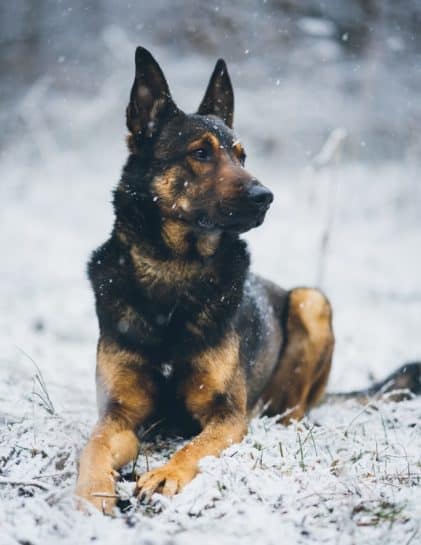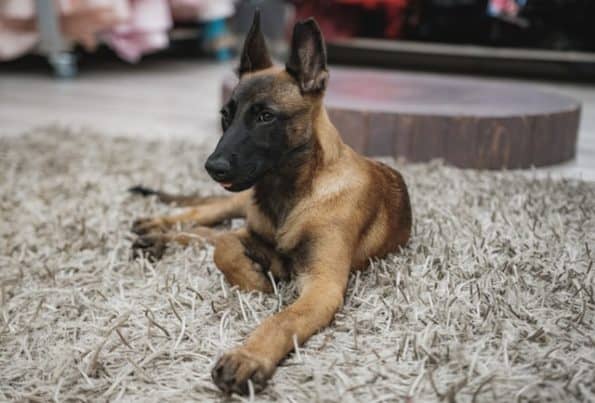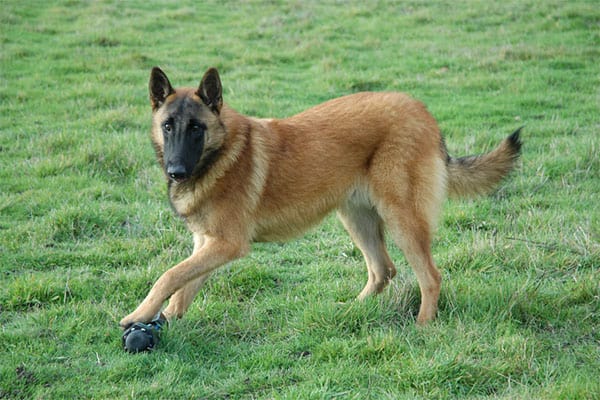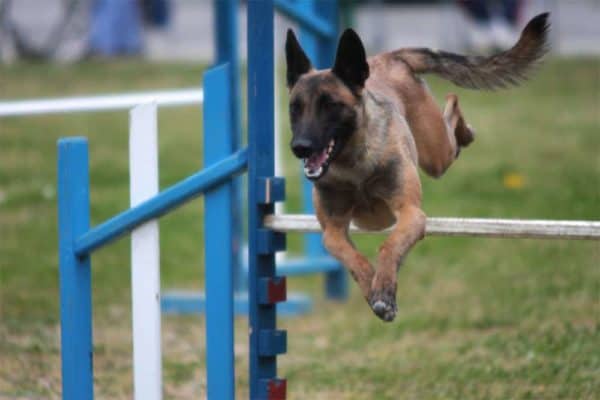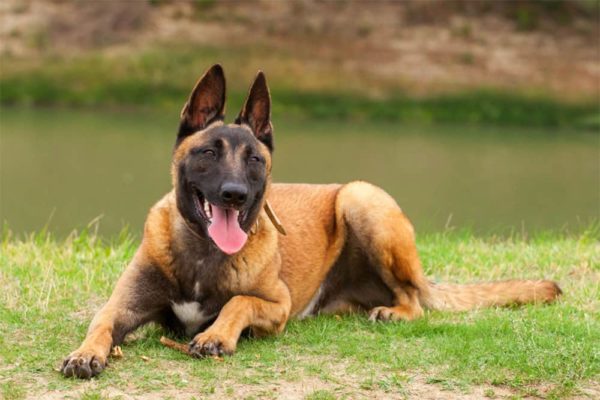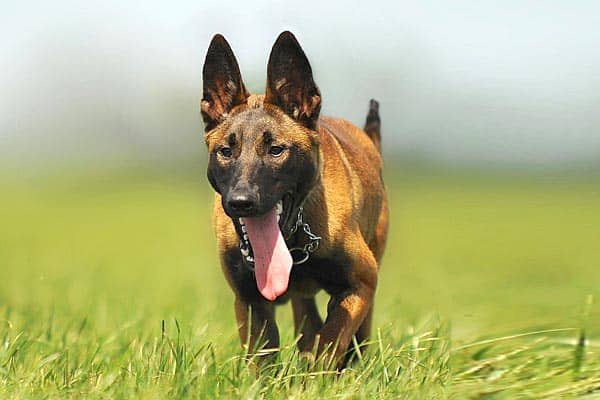Do Belgian Malinois Have Webbed Feet: Learn All About Mal Paws
The Belgian Malinois dog breed is known to be a superior canine athlete – quite possibly the most gifted dog on the planet to hear the military and police handlers tell it.
To watch a Belgian Malinois running, jumping, climbing, digging, diving or swimming is to marvel at their sleek physique and unstoppable work ethic.
And the “Mal,” as enthusiasts have nicknamed this dog breed, has a truly endless energy level that never seems to run out.
With a natural mastery of so many sports, you would think the Belgian Malinois dog is born with webbed feet.
But are they? That is exactly what we will investigate in this article.
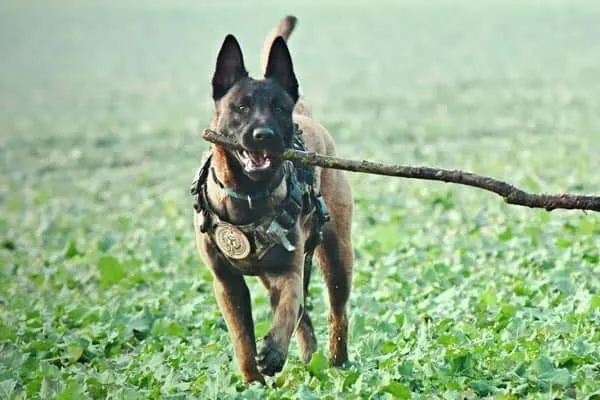
Do Belgian Malinois Have Webbed Feet?
The Belgian Malinois does not have true webbed feet the way that retriever type gun dogs typically have.
However, all dog breeds have some degree of webbing between their toes. Here, the Belgian Malinois is no exception.
In the rest of this article, learn about the types of canine feet and which paw type the Belgian Malinois dog breed has.
Watch an Amazing Dock Diving Belgian Malinois
This jaw-dropping YouTube video shows you exactly what a Belgian Malinois is capable of in the water.
So if the Mal doesn’t have webbed feet, clearly they should – these dogs are at home on land, in water, and even in an aerial setting, as we will talk about in the remainder of this article.
What Are the Three Main Types of Canine Paws?
According to The Farmer’s Dog Digest, modern domestic dogs have three main types of paws.
However, all dog paws have the same basic features in terms of their underlying anatomy. Some dog paws have just become more specialized for certain traits and talents.
One of the best examples of this increased specialization is that all dog paws have some amount of webbing between the toes.
But certain dog breeds have more of this webbing than do others, which makes it easier for these breeds to swim or dig.
Learn about each one in this section and find out which one the Belgian Malinois dog breed has.
Cat feet
As Treehugger explains, cat feet take their name from the shortened third or digital bone, which creates a more compactly oval footprint just like a cat’s footprint.
The benefit of cat feet is that they require less energy output for activities like running and jumping – activities that breeds like the Belgian Malinois excel at.
So it probably won’t surprise you to learn that cat feet are the foot type that the Belgian Malinois dog has.
Hare feet
Hare feet are named for their resemblance to the feet of a wild hare – the middle two toes are longer and the footprint is longer as a result.
As the name suggests, hare feet give a dog an advantage with running speed, which is why breeds like the Greyhound – the fastest dog breed in the world – have hare feet.
Webbed feet
Webbed feet get their name for the increased amount of webbing present between the dog’s toes.
This webbing functions much like a duck’s webbed feet do, aiding in a swift movement and precise navigation through the water.
Many popular gun dog and hunting dog breeds have webbed feet to assist in retrieving downed waterfowl for their human hunting partners.
The ever-popular Labrador Retriever is a great example of a dog breed with webbed feet.
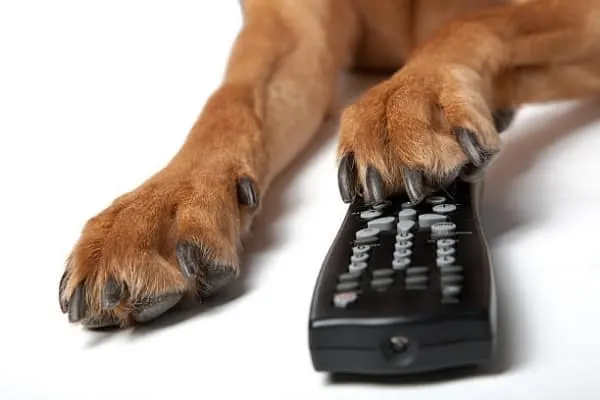
Learn All About Belgian Malinois Dog Feet
The American Kennel Club (AKC) is the reigning dog breed registration association for the United States. The United Kennel Club (UKC) is the equivalent for Europe.
According to Mystique Malinois breeder and the official AKC and UKC Belgian Malinois dog breed standards, these are the characteristics of “perfect” Belgian Malinois dog feet.
- No declaws present.
- Hind paws are longer than front paws.
- Paw shape is oval.
- Toes curve towards one another to form a perfect oval shape.
- Toes are arched.
- Paw pads are well padded and “springy.”
- Nails are generally dark (or white if the dog has white toe tips).
As you can see, there is no mention in either purebred dog association’s breed standard of webbed feet.
Rather, the Belgian Malinois feet are described as being oval, which comes much closer to the “cat type” paw pads we just described in the earlier section here.
Special Abilities of the Belgian Malinois Cat Feet Paws
As we alluded to in an earlier section here, the Belgian Malinois gains an advantage in terms of energy conservation from having the smaller, more compact, energy efficient, and cat paw shape.
But why would a dog breed that many describe as “tireless” need paw pads that conserve even more energy? Are there any other advantages that a dog gains from having the cat feet paw shape?
As a matter of fact, there are additional advantages that come from having smaller, compact, oval cat paw-like feet.
Agility
The small, compact, perfectly oval feet of the Belgian Malinois means the dog has to expend less energy and effort to turn on a dime.
This gives these dogs the ability to maneuver easily in tight quarters or to respond to threats coming from multiple directions at once.
Their maneuverability in combat situations is unparalleled, as the American Kennel Club (AKC) points out.
Whether the threat is coming from a pack of wild wolves trying to take down a sheep or from multiple human enemies trying to overcome a military unit, the Malinois can respond without a moment’s hesitation, thanks in part to their small, lightweight paws.
Balance
In the breed standard for the Belgian Malinois that we outlined here in an earlier section, you learned that the Belgian Malinois’ back paws are slightly larger and longer than are the front paws.
This is part of what gives the Malinois such superior balance when undertaking such athletic feats as scaling a vertical wall or landing on their feet (literally) after a skydiving mission.
Endurance
The Belgian Malinois has such high-intensity drive and energy that these dogs are quite simply unsuited to life in a purely “pet dog” capacity.
As the Malinois Ranch Rescue charity points out, Malinois need hours of vigorous exercise every day to fulfill their strong drive to work at a job.
The famous Malinois endurance stems in part from how every aspect of these dogs’ physique is designed to conserve energy, including their lean and compact paws.
Speed
Finally, while the Belgian Malinois is not the speediest dog breed on the planet, these dogs are very, very fast.
Having small, compact paws that are “springy” and mobile not only contributes to Mal’s endurance, agility, and balance but also to their flat-out running speed.
Anyone who has ever witnessed a Malinois in training as a protection dog can attest to just how quickly one of these dogs can close the gap between themselves and a potential attacker or enemy.
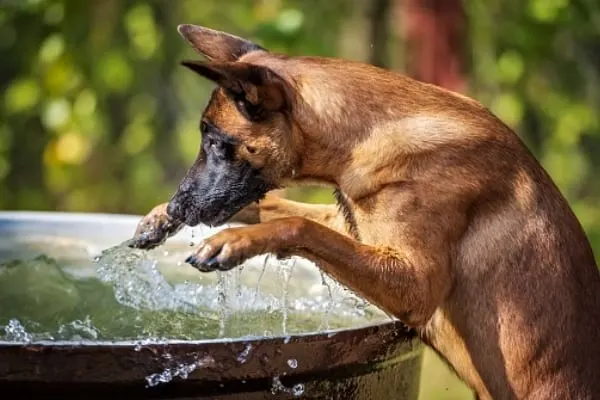
How to Care for the Belgian Malinois Feet
Properly caring for your dog’s paws is a big part of keeping your Mal healthy and able to run and swim and play the way these dogs love to do.
It is important to know the warning signs that your dog’s paws might need veterinary attention, including jagged nails, stinky “Frito Feet,” swollen or abraded paw pads, and other signals.
Regular paw pad care should include all of the following:
- Grooming and brushing the hair on the feet.
- Clipping long hair between the toes to keep the dog from tripping.
- Trimming and filing the nails to keep them short and smooth.
- Cleaning between the toes and drying them completely to guard against infection.
- Inspecting the paw pads for injuries like embedded thorns or thickened pads.
- Making sure the skin is smooth and healthy.
Malinois are generally “wash and wear” dogs, which means they only need occasional baths and brushing of their short, flat coats.
But inspecting your Mal’s ears, teeth, and paw pads should be done weekly to be sure no health issues slip by you.

Signs Your Dog’s Paws Need Attention from a Veterinarian
What are some signs your Belgian Malinois’ paws may need medical attention? According to Preventative Vet, the most commonly cited issue is stinky paws that smell like corn chips.
Other warning signs include thickened, crusty paw pads, skin that looks dry or cracked, and redness or swelling on the feet or paw pads.
If your dog starts licking or biting their feet, this is another common sign that something is bothering them.
It could be as simple as a bug bite or a painful sticky burr, but it might also be a more complicated issue like allergies or injury.
To be safe, it is best to let your canine veterinarian take a look.
Related Reading: Do German Shepherds have Webbed Paws?
























